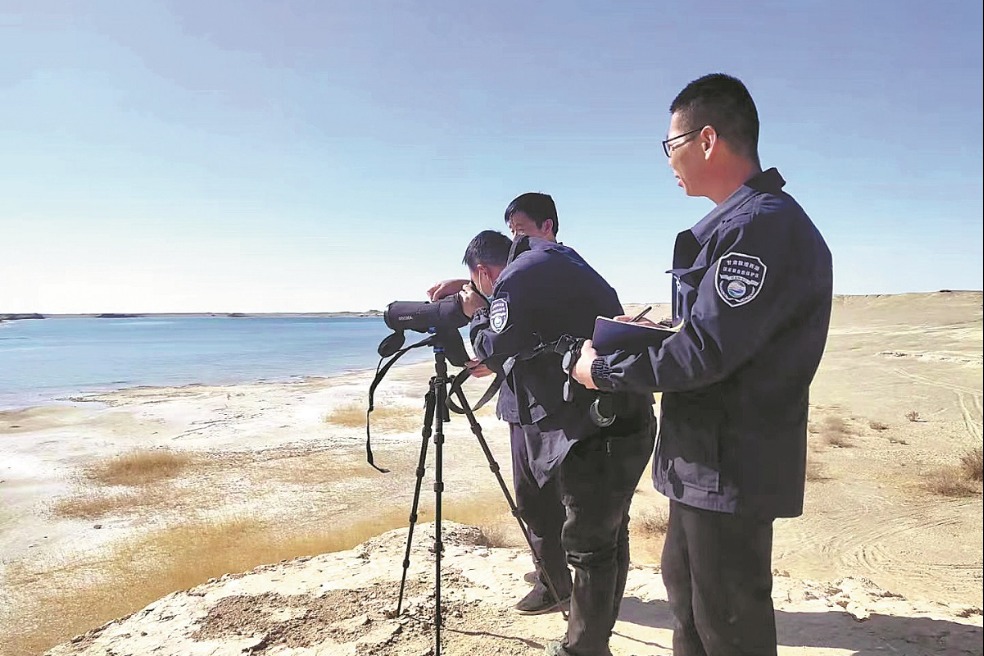China sees surge in endangered species populations

China has witnessed a steady increase in populations of rare and endangered wild flora and fauna, with over 200 animal species entering a stage of restorative growth.
The progress was revealed by the National Forestry and Grassland Administration on Thursday, this year's International Day for Biological Diversity, themed "Harmony with nature and sustainable development".
Over 100 endangered wild plant species have also been brought under emergency conservation measures, said the administration.
The achievement was made thanks to the country's continuous efforts to implement a nature reserve system centered on national parks and wildlife protection projects, it added.
Biological diversity in the Sanjiangyuan National Park, for instance, has maintained a continuous momentum to thrive, with the population of Tibetan antelopes rebounding from no more than 20,000 in the early 1980s to over 70,000 nowadays.
The administration highlighted the surge in the number of wintering waterbirds in the country as another clear example of this progress.
Monitoring showed that 5.06 million waterbirds wintered in China last year, a historical high, it said.
Ma Keping, deputy director and secretary-general of the Chinese Academy of Sciences' Biodiversity Committee, said that these achievements in China are primarily the result of effective conservation efforts.
"Enhanced protection measures have not only improved habitat quality but also led to an increase in their sizes," he said, adding that targeted species population recovery measures have also contributed to this progress.
According to the National Forestry and Grassland Administration, it has implemented rescue conservation projects for 48 critically endangered wildlife species, encompassing field protection, rescue and rehabilitation, artificial breeding, and reintroduction into their natural habitats, all aimed at promoting the growth of their wild populations.
To further promote biodiversity conservation in China, Ma called for enhanced management of reserves by bringing agricultural areas within and around reserves under the oversight of relevant authorities.
Currently, such areas for agricultural purposes are not under reserve authorities' administration. It's common, however, for many animals, particularly birds, to leave protected areas for food, Ma said.
Elliot's pheasant, a bird under first-level State protection, for instance, often seeks food in oil-tea camellia farms around its reserves, he said.
"They cannot live without such areas," Ma emphasized.
He stressed that empowering conservation authorities to manage such land is an "optimal strategy".
While keeping these farmlands intact, the reserve authorities could provide incentives for farmers to reduce and even eliminate the use of chemical fertilizers and pesticides.
"This approach would lead to a mutually beneficial outcome for all involved," Ma said.
In its latest release, the National Forestry and Grassland Administration has pledged a strengthened effort to further promote biodiversity conservation in China.
With the aim of protecting key endangered species, the administration will undertake major biodiversity conservation projects to support the recovery of the wild populations of these species.
Additionally, as part of efforts to comprehensively enhance biodiversity conservation, the administration said it will intensify crackdown on illegal wildlife trade.
In another development on Thursday, the CAS' Biodiversity Committee announced significant progress by Chinese scientists in identifying new species throughout the country.
While identifying 132 new species of vertebrates and 309 new species of arachnids last year, Chinese scientists found 284 new plant species and also spotted another four plant species that had not been seen for many years.
They also reported 1,723 new species of fungi, accounting for 48.5 percent of the global total, according to a media release from the committee.
"The progress underscores Chinese scientists' unwavering dedication to conducting increasingly thorough research endeavors," Ma said.
Li Menghan contributed to this story.
- China sees surge in endangered species populations
- Actress Huangyang's father under investigation
- Landslides leave two dead, 19 trapped in Guizhou
- New Xinjiang museum traces regional governance
- Global water experts tackle biosafety at Suzhou forum
- New China-Central Asia energy alliance aims for innovation and cooperation





































